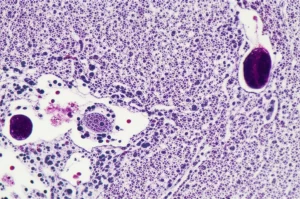The Secret Effort Behind Where You Look
Hey there! Ever stop to think about how often your eyes dart around? Like, *all* the time. We’re talking three or four times *every second* when you’re looking at something. Each one of those quick little jumps, called a saccade, is actually a tiny decision your brain makes. Where should I look next? It’s one of the most frequent choices your brain has to deal with, and honestly, it totally shapes how you see the world.
For a long time, the thinking went like this: your eyes go where you *want* them to go (your goals), where they’ve gone before (your history), or where something is super shiny or stands out (physical salience). Pretty straightforward, right? This was kind of the standard model, the “tripartite” view of how we select what to look at.
But lately, scientists have been digging a bit deeper, and it turns out there might be another player in the game. And it’s something we all understand: effort. Yeah, the sheer *effort* it takes to plan and actually *do* that eye movement seems to matter. Think of it as a little cost associated with each potential glance. And guess what? Studies suggest we prefer the less effortful, or “affordable,” saccades.
This got me wondering (and the scientists in the text too!): Do these “saccade costs” still matter when there’s something super salient, something that’s screaming for your attention? Or does the shiny thing just completely override the effort calculation? That’s the cool question this research tackled.
What Exactly Are Saccade Costs?
Okay, let’s break down this “saccade cost” thing because the term has been used in a bunch of ways. When I talk about saccade costs here, and what the researchers in this text mean, we’re talking about the *intrinsic effort* involved in just planning and executing the eye movement itself. It’s not about whether you get a reward for looking somewhere, or how much information you get once you look there, or even the effort of *deciding* between options. It’s the physical and mental effort of making the eye *move* in a specific way.
Think about it like lifting weights. Lifting a 5-pound weight takes less intrinsic effort than lifting a 50-pound weight, regardless of whether someone pays you to do it or what you do with the weight afterward. Saccades are similar – some movements are just inherently a bit more taxing for the brain to plan and execute than others.
And here’s a neat part: scientists can actually get a physiological peek at this effort. How? By looking at your pupils! Turns out, your pupil size is a pretty reliable indicator of mental (and physical) effort. When you exert more effort, your pupils dilate. So, by measuring pupil size right before a saccade, researchers can get a sense of how “costly” that specific movement is, independent of the decision itself or what you’re looking at.
Using this, previous work has shown that different types of saccades have different costs. For example, moving your eyes diagonally (oblique saccades) seems to be more costly than moving them straight up, down, left, or right (cardinal saccades). And downward movements might be a bit more effortful than upward ones. Pretty specific, right?
The idea that we prefer less effortful options aligns with a fundamental principle called the “law of least effort.” Basically, our brains are wired to be efficient. Given a choice, we’ll often go for the path of least resistance, especially when other factors are equal.
The Experiment: Costs Meet Salience
So, how did they test if effort still matters when something is salient? They set up a task where participants looked at a screen and had to quickly choose between two possible targets to move their eyes to. Crucially, these targets could differ in two ways:
- Salience: One target might be a bright red ring (high salience, because red stands out and was less common), while the other was a plain black ring (low salience).
- Cost: The targets were placed in different directions. Based on that previous pupil-size research, the researchers knew that choosing one direction over the other would involve a different level of intrinsic saccade cost.
Participants just had to look at one of the two targets as fast as they could. By seeing which target they chose in different scenarios (e.g., salient vs. non-salient, high-cost direction vs. low-cost direction), the researchers could figure out how salience and effort were influencing the decision.

The Results Are In: Both Matter!
So, what did they find? Well, first off, no big surprise here: participants were more likely to choose the salient (red) target when it was an option. Shiny things grab our attention, check.
But the really interesting part came when they looked at the effect of cost. Even when the targets were equally non-salient (both black), participants still showed a preference for the directions that were known to be less costly (like cardinal over oblique, and upward over downward movements). This confirms that saccade costs *on their own* influence where we choose to look.
Now, the big question: what happens when you put them together? When there was a choice between a salient target and a non-salient target, and these targets also differed in cost, both factors played a role. Participants still preferred the salient target overall. BUT, the effect of saccade cost didn’t disappear! While the presence of the salient target *reduced* how much the cost influenced the decision, it didn’t eliminate it entirely. Participants were still *less likely* to choose a costly salient target compared to an affordable salient target, and *more likely* to choose an affordable non-salient target compared to a costly non-salient target.
This suggests that salience and saccade costs aren’t just competing, where one completely wins over the other. Instead, they seem to be integrated. Both factors contribute to the final decision of where your eyes go.
Beyond the Old Model
What does this mean for how we understand visual attention? Remember that old “tripartite” model – goals, history, and salience? Well, these findings, along with other recent work, strongly suggest we need to add a fourth fundamental factor: *effort*, or saccade costs. It looks like saccade selection is driven by a “quadripartite” model.
Think of it like your brain creating a “priority map” of the visual scene. Traditionally, this map was influenced by what you’re looking for (goals), what you’ve seen recently (history), and what’s popping out (salience). Now, it seems this map is also influenced by how much effort it would take to actually move your eyes to different locations on the map.

This is pretty important because it means that even in complex, natural scenes where lots of things are salient and you have goals, the brain is still subtly factoring in the physical cost of moving your eyes. It’s not just about *what* you see, but also the *cost of seeing it* by moving your eyes there.
Why Are Some Saccades More Costly?
The paper touches on this too, and it’s fascinating. While pupil size tells us *that* some saccades are more costly, it doesn’t tell us *why*. The researchers speculate it’s a mix of things:
- Motor Complexity: Planning a diagonal movement might just be neurally more complex than a straight one.
- Attentional Deployment: How your attention shifts *before* the saccade might differ depending on the direction, and some shifts could be more effortful.
- Brain Asymmetries: Our visual system isn’t perfectly symmetrical. For example, the lower visual field seems to be represented more strongly in the brain than the upper field, which might contribute to why downward saccades feel more costly than upward ones.
- Saccade Metrics: Properties like how far or fast your eye moves might also play a role in the cost.
Pinpointing the exact origins of these costs is a big area for future research, but it’s clear they have a real impact on our behavior.
Final Thoughts
So, the next time your eyes flick across the screen or around the room, remember that tiny, unconscious calculation happening. Your brain isn’t just drawn to the brightest light or the thing you’re searching for; it’s also doing a quick cost-benefit analysis on the physical effort of the movement itself. Effort isn’t just something you feel when you hit the gym; it’s a fundamental factor driving one of the most frequent actions your brain performs.
This work really highlights that effort, in the form of intrinsic saccade costs, is a robust and important factor in deciding where we look. It works alongside salience, goals, and history to build that internal priority map that guides our gaze. And while this study focused on overt eye movements, it makes you wonder if a similar “cost” factor is at play when we shift our attention internally, without moving our eyes at all. That’s another cool question for the future!

Ultimately, understanding these factors helps us build better models of visual attention and gives us deeper insights into how our brains decide what’s important enough to look at.
Source: Springer







